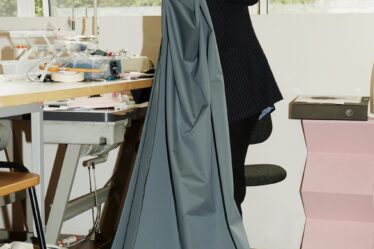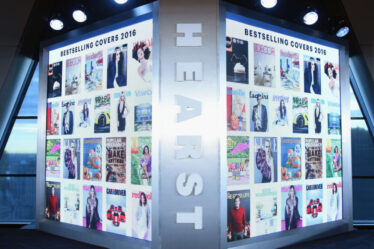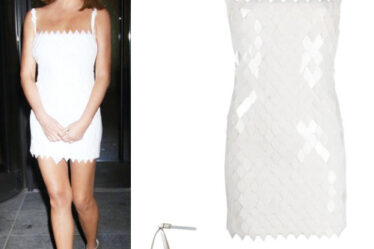
“New York City is dead forever.” In the bleak summer of 2020, that headline ripped through a pandemic-alerted reality and touched a nerve.
Jerry Seinfeld offered a rebuttal, saying “Oh, shut up.” More than three years later, he is being vindicated. And nowhere is that vindication more evident than a two-block stretch of New York’s Fifth Avenue.
In that key Manhattan shopping corridor, the world’s biggest luxury brands are outdoing each other to score the best spots. Gucci’s parent and Prada-tied entities have raced to buy properties on the stretch from 58th to 56th street over the past two months for almost $2 billion combined. Louis Vuitton’s parent company, meanwhile, is looking at 745 Fifth, another corner spot just steps from the Plaza Hotel and Central Park, and near the gleaming condo towers on Billionaires’ Row.
The slew of blockbuster deals is proving to be a bright spot in an otherwise tough commercial property market. Higher borrowing costs have pummelled property valuations, an effect that’s rippling through the economy and stinging banks from New York to Japan.
New York’s luxury market was also in the doldrums as the pandemic walloped shopping corridors in the city and travel and tourism dried up. But the sudden surge of interest from the luxury brands in recent months shows the rapid recovery for a lofty segment of Manhattan’s retail real estate. The luxury conglomerates, backed by billionaire families with long-term horizons and coming off a post-pandemic boom, are seizing a moment — both in New York and globally — at a time when many traditional real estate investors have been sidelined as rates surged.
“These are tenants that are iconic, enmeshed and entrenched in these particular pockets” of New York, said Michael Marks, an executive director at Cushman & Wakefield. “They’ve been there, or envision themselves being there, for decades to come and this gives them an opportunity to control their destiny, to minimise rent fluctuation or spikes.”
The moves point to a crucial rebound in tourism for New York, which is battling cities including Beverly Hills, Dallas and Miami to host top brands and their lavish flagship stores, said Madelyn Wils, chief adviser for the Fifth Avenue Association. It’s a shift from just three years ago, when vacant storefronts were multiplying further south on the iconic avenue, near destinations such as Rockefeller Center and St. Patrick’s Cathedral.
The recent purchases have been a way for a handful of luxury billionaires to put their stamp on the area. Bernard Arnault, chief executive officer of LVMH Moet Hennessy Louis Vuitton SE, is the world’s third-richest person with a fortune estimated at $185 billion, while Miuccia Prada Bianchi and her husband Patrizio Bertelli, Prada SpA’s chairman, have fortunes estimated around $6 billion each, according to the Bloomberg Billionaires Index. François Pinault, Kering SA’s founder, is worth $34 billion. His son François-Henri Pinault is chief executive officer of the Gucci owner.
Seizing a Moment
When the prime spots became available, the luxury companies moved quickly. The two Prada purchases — of 720 and 724 Fifth for a total of $835 million — were completed in less than 20 days in December, where transactions of such size normally take months, according to people familiar with the matter, asking not to be identified discussing private details. Kering’s $963 million deal for 715-717 Fifth closed in about a month, the people said.
Billionaire Jeff Sutton, who owns retail properties throughout New York, was the seller behind those deals. While the properties are located on a prime shopping corridor in Manhattan, they haven’t been free of hassle in recent years as battles with lenders and Prada as a tenant have cropped up.
Still, the Prada building transactions mark a solid gain for its owners. The sale of 724 and 720 Fifth at $425 million and $410 million, respectively, was far above the $223 million and $153 million Sutton and partner SL Green Realty Corp. paid for the buildings more than a decade ago, public records show. SL Green sold its stake in the Prada buildings to Sutton a few years ago, but still held a minority stake in the Kering ones.
The Fifth Avenue deals “developed quickly and confidently and I think it’s very, very exciting for the city,” SL Green CEO Marc Holliday said in January on an earnings call. “High-street retail in New York City is once again on the rise.”
Sutton and a representative for Prada declined to comment while Kering didn’t respond to a message seeking comment.
The transactions — among the largest in the city in the past 12 months — have given a boost to New York’s otherwise largely frozen commercial-property market. High borrowing costs are still squeezing out many other potential buyers and rising vacancies have slammed valuations for some buildings, especially offices.
With ready cash and long-term horizons, the luxury conglomerates are seizing a moment at a time when many traditional real estate investors are sidelined, according to Will Silverman, the Eastdil Secured managing director who worked on the Prada and Kering deals. And with stores on Fifth Avenue already, he said, the companies have real-time knowledge of the area and its shopping patterns.
For the biggest luxury companies, owning Fifth Avenue real estate is an extension of how they’ve done business globally, buying properties along the hottest international shopping strips.
LVMH had a record year of property acquisitions in 2023, purchasing roughly €2.45 billion ($2.63 billion) of real estate, mostly for retail operations, in places such as central London and Paris’ avenue des Champs-Elysees. In 2022, the luxury giant bought 22 Avenue Montaigne, where its headquarters are based. Kering also has purchased prime retail sites in recent years, including in Paris and Tokyo.
On the Champs-Elysees, LVMH is currently renovating a building for its biggest label Louis Vuitton. A renovated flagship for the company’s Christian Dior brand at 30 Avenue Montaigne opened in 2022 and houses a museum, restaurant, guest suite and gardens.
“LVMH would never have done a boutique like 30 Montaigne for Dior in Paris had it been renting the location,” LVMH chief financial officer Jean-Jacques Guiony told Bloomberg on Jan. 25 after the company’s earnings announcement. “If we’re a landlord, it allows to have a different vision.”
New York, for its part, has already seen the benefit of LVMH’s investments.
The conglomerate previously cemented its status on Fifth Avenue with the redevelopment of a massive location for jeweller Tiffany & Co. in a building at the corner of 57th Street. When the flagship store — among the largest in the company’s entire 75-brand portfolio — reopened in April, it had “a ripple effect,” said Marie Boster, president of the Fifth Avenue Association.
“Stores reported to us that they saw sales that weekend that were unprecedented,” Boster said. “Investments are working, and that’s contributing to the momentum in interest that we’re seeing on Fifth Avenue.”
Meanwhile, jeweller Harry Winston is also tackling a major renovation and expansion of its landmark store at 718 Fifth, a project that started years ago.
With most of the prized corners on upper Fifth Avenue claimed, demand likely will spread to other prestigious retail submarkets in New York, according to Cushman’s Marks. Places such as Madison Avenue are seeing a resurgence after being decimated by the pandemic and the broader rise of e-commerce. SoHo is also drawing more interest, from contemporary and high-end labels as well as restaurants.
Top brands “are seeking great locations and they’re becoming harder and harder to find,” said Mark Masinter, chairman of global retail at Newmark Group Inc. “While Fifth Avenue specifically around this specific grouping of acquisitions is a very interesting story, the broader story is the rebound of New York City.”
By Natalie Wong and Angelina Rascouet



